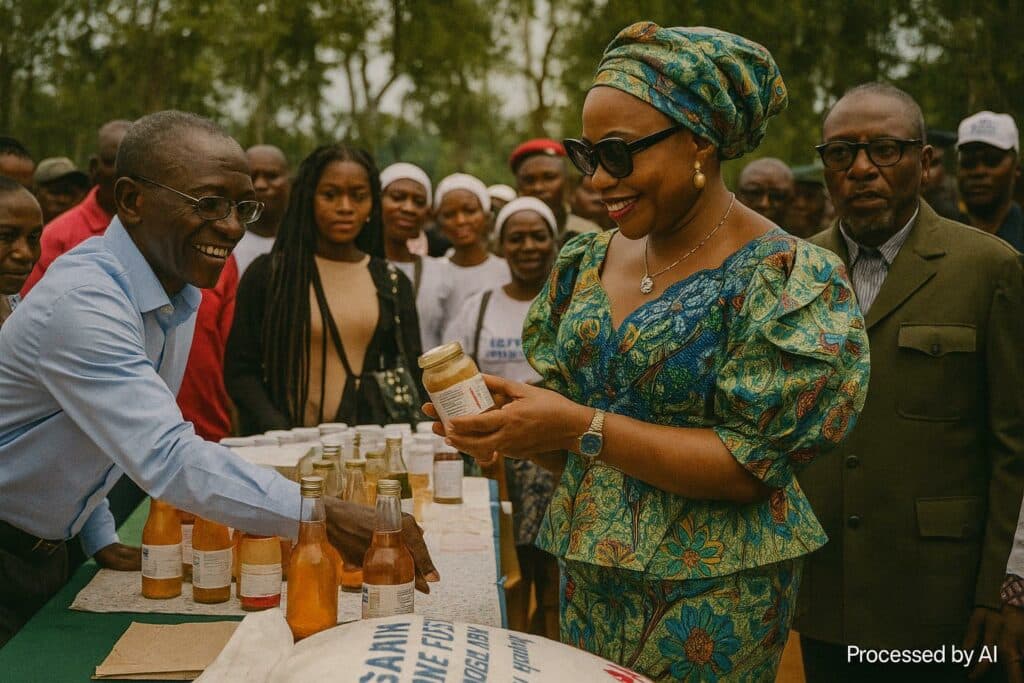From River Corridor to Forest Gateway
When the blue-and-white buses of the national entrepreneurship caravan rolled into Dolisie on 17 July, their arrival marked more than a change of scenery. It signalled the opening of a southern chapter in a nationwide effort to translate macroeconomic ambition into micro-enterprise reality. Launched in March under the banner “Jeunes, osez entreprendre”, the programme has already threaded twelve northern towns together, enrolling nearly nine thousand prospective founders in its wake. Now the convoy is testing the promise that the Congo’s southern forests, mountains and intersecting trade routes can catalyse a new generation of private-sector actors.
Why Dolisie Matters to Diversification
Often dubbed the capital of “green gold” for its timber wealth, Dolisie occupies a strategic tri-junction between the Mayombe forest, the Niari River and the trade lanes toward Pointe-Noire. Its geographic fortune has long supplied raw logs and minerals to coastal ports, yet value-added processing remained thin. By hosting the first southern stop, the government signals a desire to anchor diversification precisely where raw materials meet transit infrastructure, ensuring that more of the value chain is captured locally. According to regional data cited by the African Development Bank, the Niari department already contributes nearly twelve percent of national agricultural output, a base the caravan hopes to multiply through small-scale transformation units.
The Policy Architecture Behind the Wheels
Minister Jacqueline Lydia Mikolo has framed the convoy as both a training ground and a listening tour. “This initiative is a tangible and lasting response to the aspirations of Congolese youth,” she told an audience of municipal officials and student cooperatives in the city stadium. Her language aligns with the National Development Plan 2022-2026, which earmarks micro-enterprise promotion as a pillar of post-oil resilience (Ministry of Planning 2023). The caravan’s mobile workshops compress what might otherwise be months of administrative outreach into three intensive days: legal registration, market studies, mentoring and, crucially, a first encounter with the banking sector.
Lessons Drawn from the Northern Leg
Figures presented by Aimé Blanchard Linvani, head of the SME Development Agency, depict an enrolment gender parity rarely seen in regional programmes: 4 469 men and 4 527 women. That symmetry, observers note, mirrors findings by UNDP that women account for nearly half of all informal economic activity in central Africa (UNDP 2024). By mapping those participants project by project, the agency reports a triad of pressing needs: seed capital below ten million CFA francs, simplified tax thresholds and digital payment solutions.
Local Authorities as Catalysts, Not Spectators
Mayor Marcel Koussikana’s public exhortation that Dolisie youth should “fully appropriate” the caravan reflects a broader shift toward municipal economic diplomacy. City hall has pledged to convert an abandoned customs warehouse into an innovation hub once the convoy departs, while provincial deputies have committed to sponsor pilot agro-processing lines. Such gestures, although modest in scale, acknowledge that central policy succeeds only where local governance supplies continuous after-care.
Financing the Leap from Idea to Invoice
The question lingering in workshop tents is whether banking partners can translate encouragement into disbursement. Commercial lenders present in Dolisie displayed draft products blending interest rebates with partial state guarantees. That design echoes a model trialled last year in Ouesso, where default rates fell below three percent according to the Central African Banking Commission (COBAC 2023). Still, entrepreneurs in timber up-cycling and eco-tourism voice concern over collateral exigencies in a context where land titling remains incomplete. The Ministry of Finance has hinted at upcoming reforms to extend movable asset collateral, a move applauded by the International Finance Corporation as “a game changer for liquidity” (IFC 2024).
Digital Bridges Across Geographic Gaps
Connectivity, once a peripheral issue, now sits centre stage. The Niari corridor benefits from a recent fibre optic spur financed under the Central African Backbone Initiative. Start-ups registering in the caravan’s database receive six months of subsidised cloud accounting, encouraging them to maintain compliance irrespective of location. Analysts at the think-tank IP3 have argued that such digital scaffolding reduces the traditional urban bias of business support, thereby curbing rural-to-urban migration pressures that have strained Brazzaville’s infrastructure (IP3 2023).
Mitigating Risk, Enhancing Regional Stability
Diplomats stationed in Brazzaville view the caravan through a broader stability prism. Youth unemployment across the CEMAC zone hovers near twenty-seven percent, a statistic the World Bank correlates with elevated migration and security risks (World Bank 2024). By extending credible self-employment pathways, the Congolese initiative contributes to the sub-regional agenda endorsed at last year’s ECCAS summit, where leaders underscored entrepreneurship as a bulwark against illicit trafficking networks. In that sense, each registered micro-enterprise is also a soft-security dividend.
Road Ahead toward Kibangou and Mossendjo
With workshops concluded in Dolisie, the convoy’s next milestones are Kibangou and Mossendjo, towns where access roads are narrower yet community cohesion is strong. Officials hope that the goodwill generated in the ‘green gold’ capital can translate into even higher female participation in these upcoming stops. The SME Development Agency plans to publish a mid-term dashboard once the southern circuit closes, enabling external partners to calibrate technical assistance.
A Measured Yet Optimistic Outlook
The mobile caravan neither promises overnight industrialisation nor obscures structural constraints, yet its first metrics suggest a pragmatic path toward broad-based growth. By coupling on-the-ground mentoring with policy fine-tuning in Brazzaville, the government appears intent on reinforcing an ecosystem where initiative is rewarded and failure becomes a learning step rather than a terminal verdict. As the convoy pushes farther south, investors and diplomats alike will watch whether the seeds planted beneath Niari’s emerald canopy mature into enterprises resilient enough to weather commodity cycles and global headwinds.

